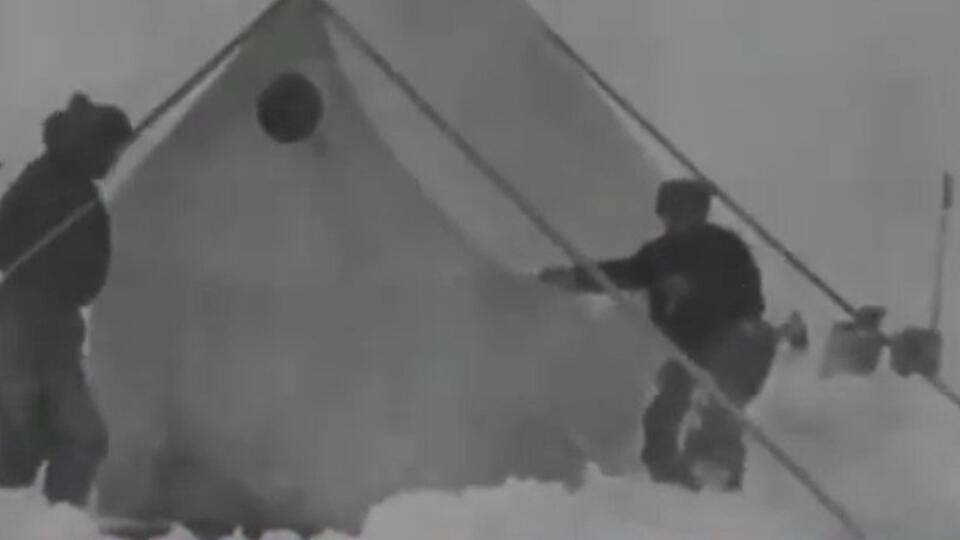Photo: © Video screenshot

Photo: © Video screenshot
Exactly 85 years ago, domestic scientists shocked the whole world by proving that the Arctic can be explored and lived in it. On this day, a record nine-month drift on the ice floe of the legendary Papanins ended. So by the name of the chief they began to call the participants of the expedition. And all this time they even managed without a stove, but they received electricity without interruption. Correspondent “Izvestia” Roman Ishmukhametov studied the pages of history.
Each of those 274 days is described in great detail. Diaries for the daughter of geophysicist Yevgeny Fedorov are a relic. Here are the details of life in conditions where a person has not been for so long before, and important scientific information about the land of eternal ice.
“The readings had to be taken several times a day, every six hours and at night, and you had to get up early in the morning. The only thing that prevented this work from being carried out was when the clouds were so low that you could not see the stars, and the coordinates were determined by the stars “– says Irina Fedorova, daughter of geophysicist Evgeny Fedorov.
In their native USSR, these four were simply called the Papaninites by the name of the expedition leader. For them, for nine months, an ice floe in the northern ocean became a home and at the same time a transport, on which polar explorers, drifting, covered almost two thousand kilometers.

“In the thirties, to land an expedition, a whole station at the North Pole, which will live for so long, and in very extreme conditions … In such heroic conditions, of course … that the Papaninites survived and completed all the tasks, this is already a great success”– says Ilya Rud, researcher at the Museum of the Arctic and Antarctic.
Leading factories and research institutes helped the future heroes of the Arctic. The Institute of Public Catering has developed a special menu. In total, in a total of one hundred tin cans, the Papaninites brought five tons of food from the mainland. From cocoa and chocolate to black caviar.
Special sleds were made at the Leningrad Shipbuilding Plant, they weighed only 20 kilograms and could withstand a lot of weight.
The tent for the camp was made at the Moscow plant “Kauchuk”. The frame was made of light aluminum pipes, the walls were canvas with two layers of fluff. And inflatable rubber floors to keep moisture out.

It’s hard to believe, but there was not even a stove inside. They were afraid of fire. Sleeping bags made of wolf fur and downy clothes saved at night. Electricity was provided by a windmill. And a dynamo – in order to have a current, you had to pedal at a speed of exactly 46 revolutions per minute.
Polar explorers sent detailed reports on the work done to Moscow every month. The depth of the ocean, the fauna of white silence, the weather, the speed of the current, the thickness of the ice, for these studies all polar explorers will later receive doctoral degrees. Morse code beat off short notes in newspapers. They were read to holes, and the Papanins themselves became folk heroes. They were worn on the hands and given gifts.
The expedition, designed for a year and a half, had to be completed ahead of time. The ice floe broke during the storm. The polar explorers remained on a patch of 300 by 200 meters. The sailors of the icebreakers “Taimyr” and “Murman” rescued Papanintsy on February 19, 1938.

“It was a shock for the whole world. We proved to the whole world that you can live on ice, you can work. The whole world began to think about it”– said Vladimir Evseev, chief specialist of the Center for Ice Hydrometeorological Information of the Arctic and Antarctic Institute.
Now the Arctic is being studied using the North Pole platform, which can drift for up to two years. There is no other ship like it, it is almost an academic campus with laboratories and modern equipment. Russia, like 85 years ago, holds leadership in the Arctic.
Source: Ren
Alfred Hart is an accomplished journalist known for his expert analysis and commentary on global affairs. He currently works as a writer at 24 news breaker, where he provides readers with in-depth coverage of the most pressing issues affecting the world today. With a keen insight and a deep understanding of international politics and economics, Alfred’s writing is a must-read for anyone seeking a deeper understanding of the world we live in.
